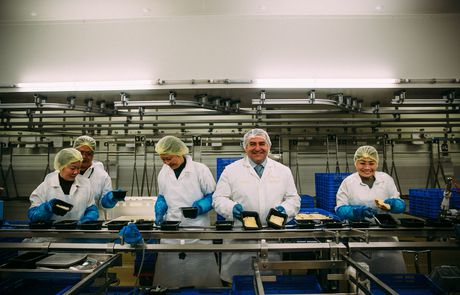Preparing and delivering 1 million meals per year

Community Chef could not easily prepare and deliver more than 1 million meals a year to its 21 local government customer-shareholders as well as hospitals, residential aged care, retirement villages and care package clients without effective material requirements planning.
Community Chef is a social enterprise that come into existence as a result of the far-sighted vision of 20 Victorian local councils (increased to 23 since commencement) that wanted to find a better way of providing high-quality, nutritionally sound, appealing meals to people requiring a Meals On Wheels service.
Increasing food standards regulation plus a constantly growing client base with diverse dietary needs were making it hard for small, individual, council-run kitchens to keep up with the continually evolving expectations and demands.
To solve the issue, the councils came together with the vision of creating a purpose-built, state-of-the-art food production facility that could produce quality-assured meals to each council for distribution. In 2009, with the support of both the state and Commonwealth governments, Community Chef was born. It is a leading example of a shared service model.
In November 2010, the award-winning Community Chef kitchen produced the first meals for five of the council shareholders. It now prepares and delivers more than 1 million meals a year to its 21 local government customer-shareholders as well as hospitals, residential aged care, retirement villages and care package clients.
Recipes are developed and meals produced at a purpose-built kitchen in Altona, Melbourne, by a team of dedicated chefs and cooks. Their focus is the provision of nutritious, culturally sensitive and affordable meals that taste delicious and that meal recipients will enjoy and truly want to eat. Quality is uppermost and all meals comply or exceed government dietary requirements.
Community Chef is HACCP accredited. Annual reviews are conducted with technical experts to revalidate and verify that food safety and quality remain effective. There is a commitment to continuous improvement and lean manufacturing practices.
The full range of prepared meals currently comprises 95 soups, 350 mains, 39 side vegetable options, 78 main salads, 3 side salads, 91 desserts and 41 sandwich varieties. The product offering is seasonally rotated, four times per year, and has a four-week rotated cycle in each season. There is a 30-day shelf life for most items, excluding sandwiches, salads and some cold desserts.
Customers are spoilt for choice with their range including food to suit preferences for Anglo-Australia meals, roasts, international cuisine, vegetarian and Asian palates, salads and sandwiches.
Special and complex dietary needs can be fully catered for, including texture-modified meals and diabetic, low-fat, low-salt, high-fibre and low-protein meals. Halal, Kosher and gluten-free meals are offered through third-party suppliers.

Community Chef facility incorporates cutting-edge technology that ensures the highest standards of food safety, maximum efficiency and a superior work environment.
Councils place their orders via an automated electronic data interchange (EDI) that allows different systems to automatically take in and authenticate orders without any manual intervention once a week, a fortnight in advance of when the meals are required. Production typically follows a three-day cycle with ingredients arriving on day one before being processed on day two, then packaged and dispatched on day three. It’s a process that uses the full material requirements planning (MRP) functionality of SYSPRO, Community Chefs’ enterprise resource planning (ERP) software solution. Food production requires a flow process and all the work centres need to be in sync for it to work. Because the menu changes every day, it’s a real test for everyone out on the production floor to be able to keep that constancy of quality coming first.

The biggest continuous challenge has been trying to balance production based on volume fluctuations. The establishment has had to cope with the continuous contraction and expansion of the business and has successfully achieved this with automation and a culture of innovation and flexibility.
The Community Chef kitchen uses the latest technology and techniques. It is one-third smaller than facilities with similar capacity, and has a lower level of energy use through limited refrigeration, less chemical waste by using ‘e-water’ and lower carbon emissions.

Chief executive Joe Ciccarone said where possible the company sourced local food.
“One of our best partnerships is with Karkana in Horsham, which is run by women in Uniting Care and they employ intellectually disabled people and they provide us with a portion of our carrots and onions,” Ciccarone said.
“We donate a lot of our spare food to Foodbank Victoria.”
Career upskilling: from food to product development chef
Former chef Zach Baudinet decided to take his years of food experience to the next level through...
A taste of flavours on trend in 2024
Understanding the flavours, ingredients and trends that will shape what we consume is essential...
What's new on the shelf this Easter?
Paper artwork-inspired chocolate eggs, sweet chilli products on show and bite-sized Polly Waffles...












